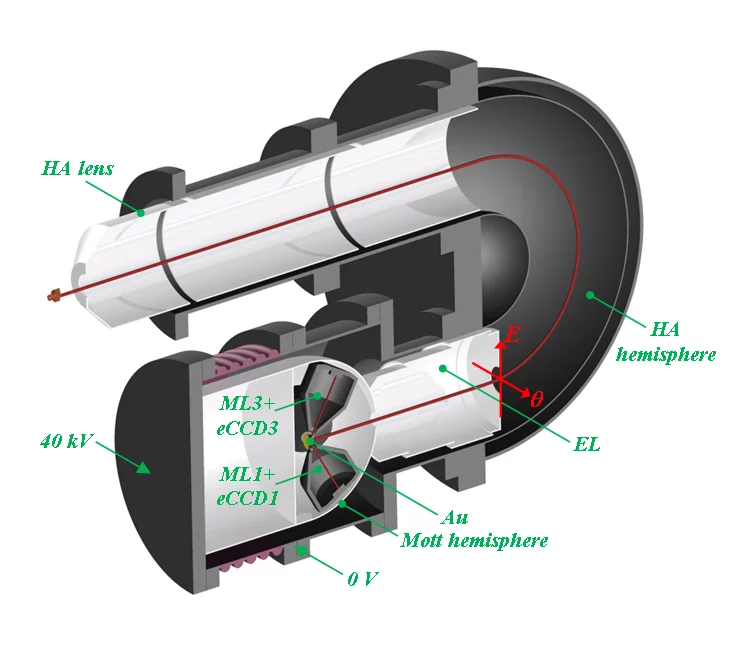The spin of electron plays a crucial role in many physical phenomena, ranging from the obvious example of magnetism, via novel materials for spintronics applications, to high-temperature superconductivity. Spin- and angle-resolved photoelectron spectroscopy (SARPES) gives the most direct access to the spin aspects of the electronic structure, but the one-channel detection principle of all presently available SARPES spectrometers severely limits their efficiency. A team of Swiss and Russian scientists has developed a revolutionary concept of a multichannel electron spin detector based on Mott scattering as the spin selective process and imaging-type electron optics. In this instrument, nicknamed iMott, the multichannel electron image produced by a standard electron analyzer or microscope is re-imaged by an electrostatic lens at an accelerating voltage of 40 kV onto the Au target and then by magnetic lenses onto position-sensitive electron CCDs whose differential signals yield the multichannel spin asymmetry image. Fundamental advantages of this concept include acceptance of inherently divergent electron rays from the analyzer or microscope as well as small aberrations. The efficiency gain compared with the single-channel Mott detector can be a factor of more than 104 which opens new prospects of spin-resolved spectroscopies in application not only to standard bulk and surface systems (Rashba effect, topological insulators, etc.) but also to buried heterostructures, in view of their utmost technological; importance. The simultaneous spin detection combined with fast CCD readout enables efficient use of the iMott detector at XFEL facilities. The real instrument based on the iMott concept is presently under construction and is expected to be in operation at the ADRESS beamline in 2016.
Original Publication
Concept of a multichannel spin-resolving electron analyzer based on Mott scatteringV. N. Strocov, V. N. Petrov and J. H. Dil
J. Synchrotron Rad. (2015). 22, 708-716 (Published May 2015), DOI: 10.1107/S160057751500363X
Contact
Dr Vladimir StrocovLaboratory for Synchrotron Radiation - Condensed Matter Physics
Paul Scherrer Institute, 5232 Villigen, Switzerland
Telephone: +41 56 310 - 5311, email: vladimir.strocov@psi.ch
